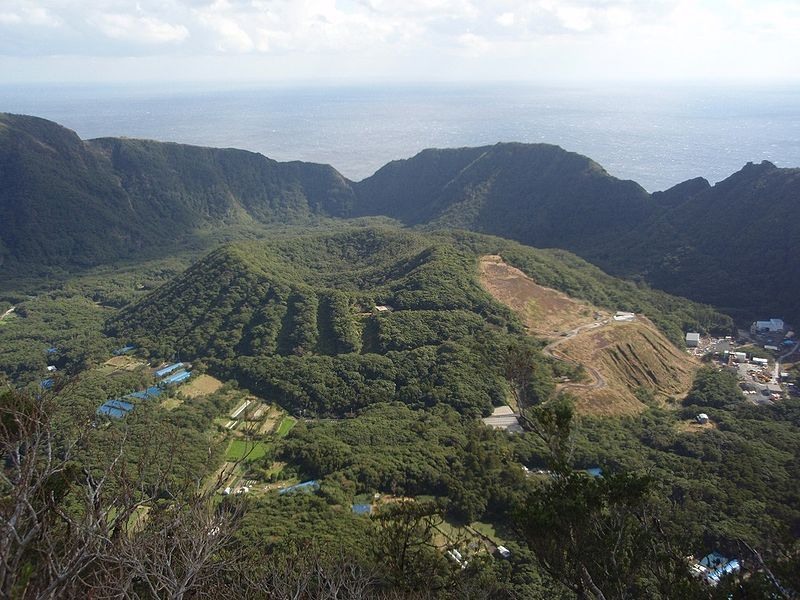Aogashima is a lush, volcanic island.
- Aogashima is an island that forms part of Japan’s Izu archipelago in Asia, and is located in the Philippine Sea.
- Aogashima is an active volcano, which last erupted in 1781 to 1785, and a small crater is housed inside the large caldera of the island.
- ‘Aogashima’ means ‘blue island’ and it covers an area of 8.75 square kilometres (3.38 square miles), and its highest point, named ‘Otonbu’ is 423 metres (1388 feet) above sea level.
- Aogashima had a population in 2014, of 170, a decrease of 35 since 2009, and it is governed by, and part of the sub-prefecture Hachijō, of Japan’s capital city, Tokyo.
- Aogashima is only accessible by boat, which can be dangerous, and helicopter, and it houses a live weather camera for boats.
Aogashima
Image courtesy of Soica2001/Wikipedia Commons
- Aogashima is the home to one post office and one school, which caters for children to junior high level (up to age 15), and for further education, teenagers are required to leave the island, often indefinitely.
- Aogashima holds a cattle festival annually in August, and its main export is a salt high in calcium called hingya salt.
- During the volcanic activity of the Aogashima volcano in 1781 to 1785, many of the more than 300 occupants died, and others fled to a nearby island, Hachijōjima.
- From 1785 to 1834, Aogashima remained mostly uninhabited and was totally deserted for 16 years, until re-settlement by a group of Japanese in 1835.
- Aogashima’s animals and plants include fish like Kujirayo (guinea grunt); the Japanese wood pigeon; lilliums; persea; various seaweed, as well as other flora and fauna.





